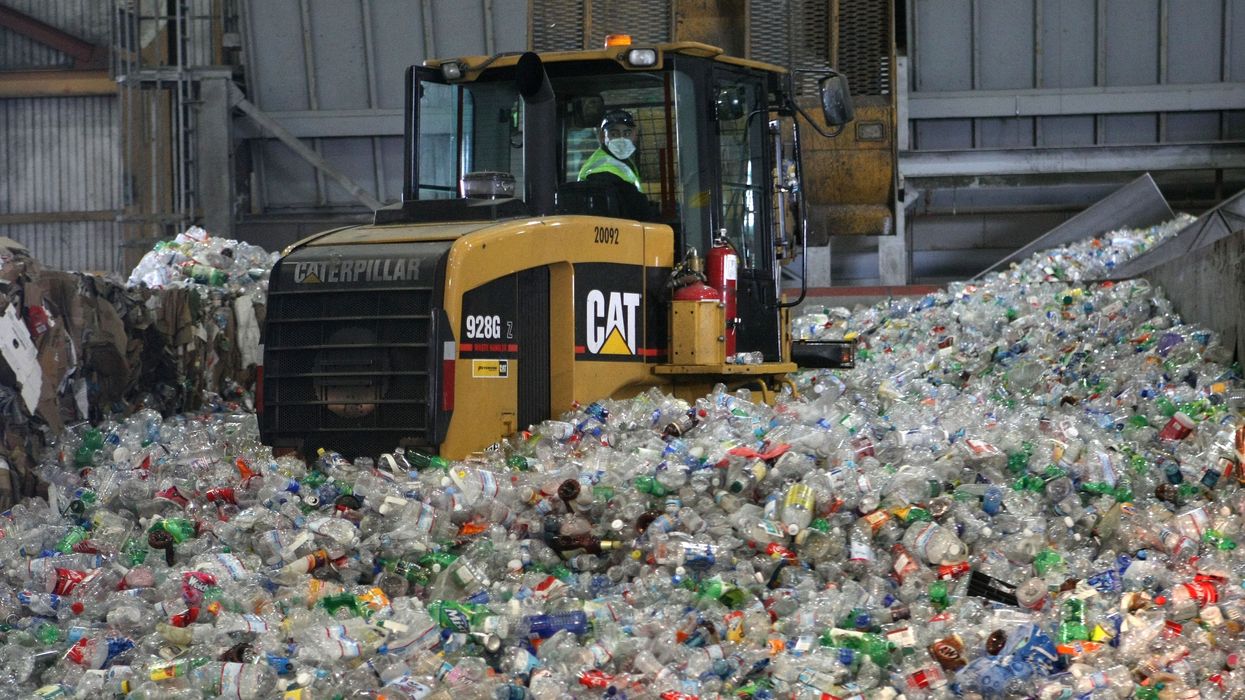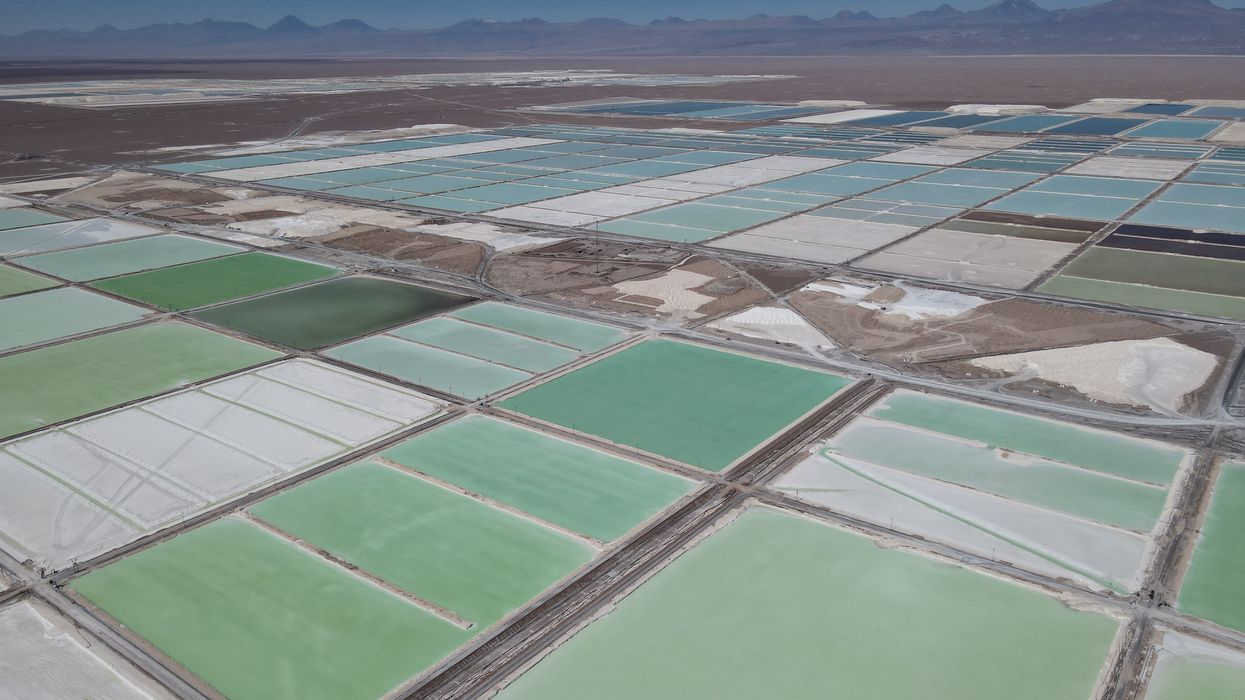Three years after I had first hypothesized that different transportation choices might require less mining, I stopped waiting for someone else to produce the data to put my hunch to the test. By that point, I had begun working with a climate think tank. I reached out to environmental engineers, transit wonks, and battery experts and asked if we could build a model from scratch. We were guided by an approach called “industrial ecology,” which studies industrial systems in terms of their material and energy flows. In this case, we were looking for the amount of lithium required to meet the needs of fully electric mobility. We pitted a scenario in which all traditional cars had been replaced with electric ones against a scenario in which more Americans rode to work, school, or shopping centers in clean energy buses or got around by bikes or by walking. In other words, and in sharp contrast to prevailing models, instead of comparing a zero-emissions world with one in which we continued to rely on fossil fuels, we compared multiple zero-emissions worlds with one another.
We didn’t stop there. Having set our imaginations free to roam, we tinkered with additional features of the worlds we were building. We imagined denser cities and suburbs, with less sprawl enabling less car use; cars with a range of battery sizes (American EV batteries are twice as large as the global median); high rates of mineral recycling and recovery. The futures we mapped out ultimately ranged from an electrified status quo to a fundamental shift in how Americans live and move. We did try to temper our dreaming with a healthy dose of realism. We only tested changes in the cities and suburbs, understanding the obstacles to rapidly building out mass transit in rural America. Even in our most transformative vision, the energy transition would still require tens of millions of EVs.
Achieving a globally just energy transition requires understanding supply chains in reverse, starting from what we produce and consume and working backward to their material inputs, and further still, to the relentless scramble for new extractive frontiers.
I expected these different green scenarios to entail distinct material footprints, measured in the total volume of lithium mining. But the results shocked me. The best-case scenario—smaller batteries, more recycling, denser cities and towns, and more mass transit use, walking, and cycling—requires 66 percent less lithium than the worst-case scenario (batteries get even bigger, suburbs stay sprawled, recycling is nonexistent).That percentage difference was based on a cumulative assessment across all the years we modeled (2023–2050). If instead we just look at 2050, the final year, the spread was more dramatic: the difference in lithium demand between the best- and worst-case scenarios was 92 percent. That’s in large part because recycling takes time to have an impact on reducing mining, with recycled feedstock increasing as the batteries from EVs purchased in the 2020s, ’30s, and ’40s reach the end of their life and become available for material recovery.
These findings put the supposedly zero-sum trade-off between climate action and protecting landscapes and communities from extraction in a new light. The futures we conjured showed that it is, in fact, possible to achieve climate targets without the alarming amount of mining predicted by all other forecasts. And there’s more: Increasing mass transit use and housing density will get us to zero emissions much faster than swapping every traditional car for an electric vehicle. To put it bluntly, a path to zero emissions that relies on electrifying individual cars is not only the most resource-intensive route to zero emissions, but also the slowest route to that urgent goal. We fully recognize that the political and even cultural obstacles to realizing our most ambitious scenario are formidable. But the prevailing approach not only requires much more extraction than socially necessary. It also runs afoul of climate science.
The implications of this modeling exercise completely changed the way I viewed mining. It suddenly dawned on me that extraction is not a problem that can be addressed solely at the sites of mining alone. It is absolutely vital to govern extractive frontiers better, improving environmental regulations and enforcing Indigenous rights. But some of our most potent tools to reduce the harms of mining reside elsewhere, all the way at the other end of far-flung supply chains. These tools take the form of the policy choices, investment decisions, and built environments that shape how we cut emissions from polluting sectors like transportation. The responsibility for protecting the Atacama’s watersheds does not rest only with Chilean bureaucrats, nor should Atacameño communities have to shoulder the burden of standing up to multinational mining firms on their own. We in the United States are also implicated in the supply chains that start in Chile’s northern reaches. Achieving a globally just energy transition requires understanding supply chains in reverse, starting from what we produce and consume and working backward to their material inputs, and further still, to the relentless scramble for new extractive frontiers.
The task of achieving a just energy transition is daunting. But this holistic view also opens up possibilities for action, revealing multiple and dispersed levers for reducing mining’s harms. Policies that promote alternatives to car use, reduce sprawl, encourage more compact batteries, and require recycling would all reduce the scale of mining needed for carbon-free transportation.
Confronting emissions as a holistic problem, rather than a purely technical question about the fastest way to electrify an ever-growing fleet of personal automobiles, entails a leap of political faith. New models and forecasts like the ones my colleagues and I built at our think tank, the Climate and Community Institute, can help us tell galvanizing stories about the future we want. If we can see and feel that alternate future, desire and describe it, then we can commit to creating the foundations for it in the here and now. Forecasts chart a path from our present to the world we want to build. But seeing something and building it aren’t the same. Better research or data can only carry us so far; concrete, bold, even risky actions are the stuff of real change. What practical steps can we take today to call forth a different tomorrow?
We can start by demanding supply chains organized around justice for everyone they touch, rather than profits for just a few. Just as any workplace is simultaneously a site of exploitation and locus of worker power, and any mine is at once a setting for extraction and a potential scene of community resistance, the supply chains of green technologies are both a means of domination—of people and of nature—and fertile ground for making the world anew.
Supply chains are currently organized for profit, but they can nonetheless become arenas for grassroots organizing and unexpected alliances. Lithium battery supply chains don’t just link mines to factories to consumers, or upstream to downstream corporations. They also connect Indigenous land defenders and urban transit users, workers manufacturing e-bikes and battery recycling advocates, bus drivers and avid cyclists, and climate activists and promoters of dense, walkable cities and towns. These communities, workers, and advocates are already bound together by the global operations of green capitalism—and in many cases, are already organizing locally. What would it take for them to join hands and fight for globally just supply chains, together?
Today, a coalition like this may feel impossible. Electrifying the status quo to stave off the scariest warming scenarios already seems hard enough. Electrifying while also changing engrained habits, like car dependency and suburban sprawl, seems far-fetched, if not utopian. But fear of radical change is misplaced: Radical, turbulent, accelerating, and yes, frightening, change is already baked into the carbon in the atmosphere and in the reign of sclerotic elites, predatory corporations, and moribund institutions.
There is no escaping the harsh reality of mounting instability—political, economic, ecological. This turmoil touches everything, including the material underbelly of the energy transition. This is the paradox of extraction: It is at once the most enduring feature of the world order and among the most prone to disruptive conflict, whether between Global North and South, between geopolitical rivals, or between local communities and huge corporations. Such contests are asymmetric, yet over the past century have provided openings to challenge the entrenched power relations of our global economy.
Extractive frontiers are so sedimented that they may feel like second nature, but it is precisely from these frontiers that we must begin again, from the underground on up.
 www.commondreams.org
www.commondreams.org
Adapted from Extraction: The Frontiers of Green Capitalism by Thea Riofrancos. Copyright ©2025 by Thea Riofrancos. Used with permission of the publisher, W. W. Norton & Company, Inc. All rights reserved.




